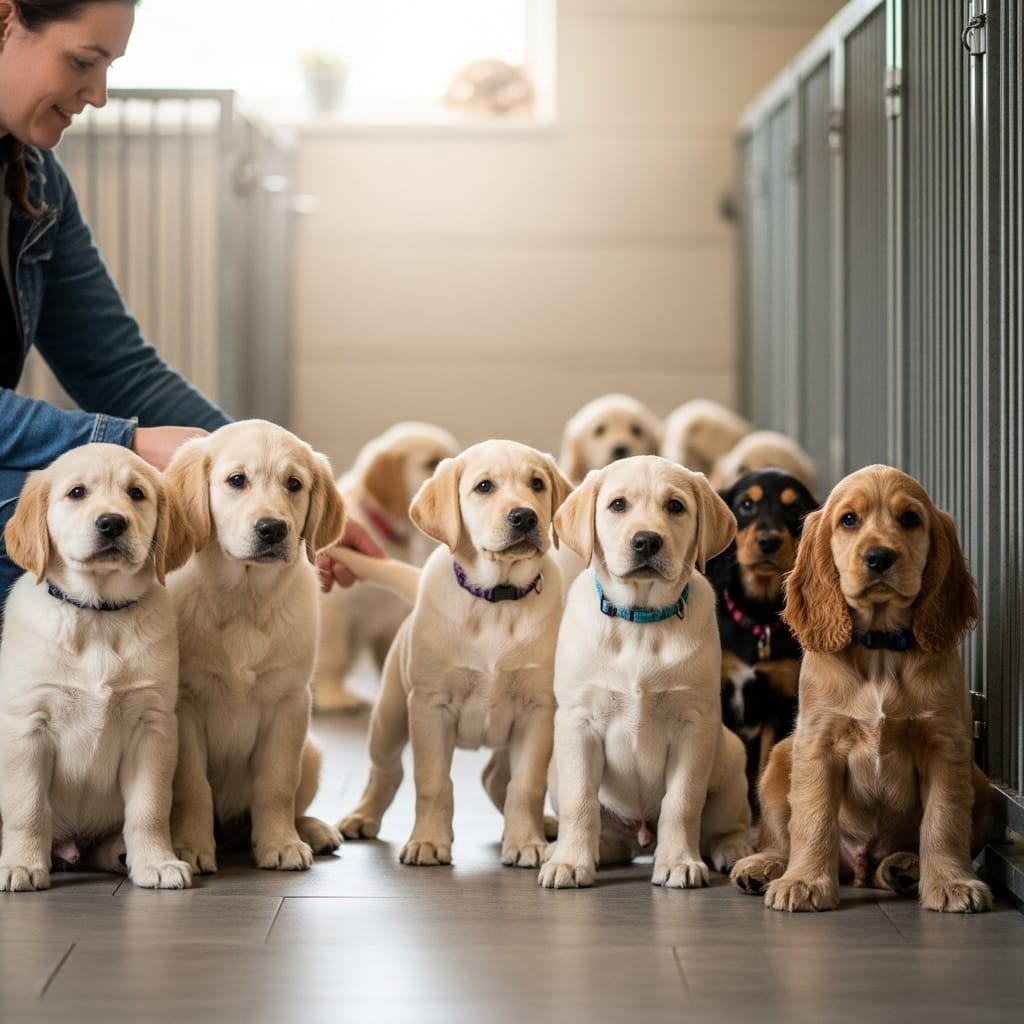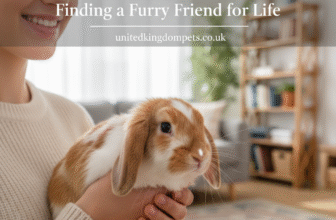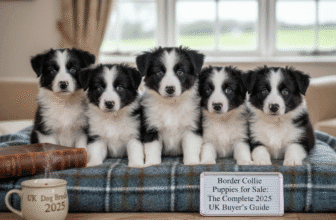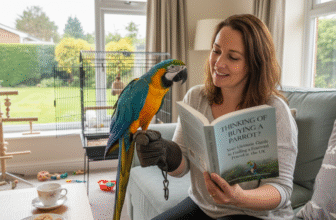
Finding Your Perfect Canine Companion: A Comprehensive Guide to Buying a Dog in the UK
The decision to bring a dog into your life is one of the most exciting and rewarding choices you can make. The thought of wagging tails, wet-nosed greetings, and unwavering companionship is a powerful draw. However, this journey is not one to be rushed. In the UK, as everywhere, the path to finding your new best friend is paved with important considerations, crucial research, and a significant dose of responsibility. This is more than just a transaction; it’s about welcoming a new family member, a sentient being with needs, emotions, and a complete reliance on you for its entire life.
This guide is designed to navigate you through the process, moving beyond a simple search for “dogs for sale” and towards a more profound understanding of how to find the right dog for you, responsibly and ethically. We’ll explore the self-reflection required before you even start looking, delve into the differences between breeds, and illuminate the paths of both reputable breeders and rescue organisations. Let’s embark on this journey together to ensure your new companion finds a happy, healthy, and forever home with you.
Part 1: The All-Important Question – Are You Truly Ready for a Dog?
Before you lose yourself in a sea of adorable puppy photos, it’s vital to take a long, honest look at your own life, lifestyle, and circumstances. A dog’s wellbeing depends entirely on your ability to provide for it, and a mismatch can lead to heartbreak for both you and the animal.

A Lifestyle Audit
Think about your daily routine. Do you work long hours out of the house? While many dogs can adapt to a 9-to-5 schedule, a puppy cannot be left alone for eight hours a day. It needs frequent toilet breaks, regular feeding, and constant socialisation. An adult dog might cope better, but loneliness can lead to separation anxiety and destructive behaviours. Consider if you have a support system – family, friends, or the budget for a dog walker or doggy daycare – to help bridge the gaps. What about your social life? Are you prepared to swap some spontaneous nights out for evenings in with your furry friend, or factor them into your plans where possible? Your energy levels are also key. Are you an active, outdoorsy person ready for long hikes on the weekend, or do you prefer a quiet life with gentle strolls in the local park? Answering these questions with brutal honesty is the first step to identifying the *type* of dog that will thrive in your care.
The Financial Reality of Dog Ownership
The initial purchase price of a puppy is often just the tip of the iceberg. The ongoing costs of dog ownership in the UK can be substantial and last for 10-15 years, or even longer. Let’s break it down:
- Initial Outlay: This includes the purchase price, but also vaccinations, microchipping (which is a legal requirement), a bed, crate, bowls, collar, lead, toys, and initial food supplies. This can easily run into hundreds, if not thousands, of pounds.
- Food: A significant recurring cost that varies wildly depending on the size of your dog and the quality of the food you choose.
- Veterinary Care: Routine check-ups, annual boosters, flea, tick, and worming treatments are standard. However, the real financial risk comes from unexpected illness or injury. A simple procedure can cost hundreds, while complex surgery can run into many thousands.
- Pet Insurance: Because of the high cost of vet care, pet insurance is not a luxury; it’s an absolute necessity. Monthly premiums vary based on breed, age, and level of cover, but it’s a non-negotiable part of a responsible budget.
- Grooming: Some breeds, like Poodles or Cockerpoos, require professional grooming every 6-8 weeks, which can be a significant annual expense. Even short-haired breeds need regular brushing and nail trims.
- Training and Socialisation: Puppy classes are essential for building a well-behaved adult dog. You might also need one-to-one training for specific issues down the line.
- Extras: Think about kennels or pet sitters for holidays, dog walkers if you work long hours, and replacing chewed-up toys and beds.
Before you commit, draw up a realistic monthly and annual budget. Being prepared for the financial responsibility is a cornerstone of good ownership.
Part 2: Navigating the World of Breeds – Finding Your Perfect Match
With hundreds of pedigree breeds and an infinite variety of crossbreeds, choosing the right one can feel overwhelming. It’s less about what a dog looks like and more about what it was originally bred to do. This genetic blueprint shapes its energy levels, temperament, and instincts.
Understanding Breed Groups
In the UK, the Kennel Club organises pedigree breeds into seven groups, which can give you a clue to their general characteristics:
- Gundogs: Think Labradors, Golden Retrievers, and Cocker Spaniels. Bred to work with humans in the field, they are typically intelligent, trainable, and active. They need plenty of mental and physical stimulation to prevent boredom.
- Hounds: From the long-legged Greyhound to the scent-driven Beagle. These dogs are guided by sight or scent and can have a very strong prey drive and an independent streak. A secure garden is often a must!
- Pastoral: The herding dogs, like Border Collies and German Shepherds. Incredibly intelligent and loyal, they thrive when they have a ‘job’ to do, even if it’s just advanced training or agility. They need a lot of mental exercise.
- Terriers: Feisty, brave, and full of character. Breeds like the Jack Russell and Border Terrier were bred to hunt vermin. They are often tenacious and require consistent training and a good sense of humour from their owners.
- Toy: Small in size but big in personality. Chihuahuas and Pugs fall into this group. They are ideal companions for smaller homes but still require regular exercise and training to prevent ‘small dog syndrome’.
- Utility: This is a diverse group of breeds with varied historical functions, including Bulldogs, Poodles, and Dalmatians. Their needs vary greatly, so individual breed research is essential.
- Working: Breeds like the Boxer, Rottweiler, and Great Dane were developed for guarding and rescue. They are typically powerful, intelligent dogs that need experienced owners who can provide structure, training, and socialisation.
Don’t forget crossbreeds and mongrels! From popular “designer” mixes like the Cockapoo to the wonderful uniqueness of a rescue dog of unknown heritage, these dogs can make fantastic pets. With a crossbreed, you may get a mix of traits from the parent breeds, so it’s important to be prepared for any combination.
Part 3: The Search – Where to Find Your Dog Responsibly
This is the most critical stage of your journey. The choice you make here has a direct impact on animal welfare. The goal is to support ethical sources and completely avoid the cruel, profit-driven world of puppy farms and irresponsible backyard breeders.
The Reputable Breeder Route
A reputable breeder is a custodian of their breed. Their primary motivation is not profit, but the betterment of the breed’s health, temperament, and conformation. Finding one takes time and patience.
What does a good breeder look like?
- They are specialists: They typically focus on one, or at most two, breeds.
- They health test: They will openly discuss and provide certificates for relevant health screening for the parent dogs (e.g., hip/elbow scores, eye tests).
- They interview you: A good breeder cares deeply about where their puppies go. They will ask you as many questions as you ask them about your lifestyle, home, and experience. Be wary of anyone who just wants to take your money.
- They let you meet the mother: You should always see the puppies interacting with their mum. This is crucial for assessing the mother’s temperament and the puppies’ welfare. Be suspicious of any excuse as to why the mum isn’t present.
- They raise puppies in the home: The puppies should be raised in a clean, domestic environment, exposed to the normal sights and sounds of a household. This is vital for socialisation.
- They provide support: A good breeder will offer a lifetime of support and advice and will insist that if you can ever no longer care for the dog, it must be returned to them.
Red Flags of Puppy Farms and Irresponsible Breeders:
- Selling multiple different breeds.
- “Puppy is ready now!” pressure: A good breeder has a waiting list.
- Meeting in a neutral location like a car park or service station.
- Not allowing you to see the breeding environment or the mother dog.
- The puppy seems lethargic, unwell, or is kept in poor conditions.
- Offering the puppy for a surprisingly low price or without paperwork.
A great place to start your search for a reputable breeder is through the Kennel Club’s Assured Breeder Scheme. While not a foolproof guarantee, it’s a solid starting point for finding breeders who adhere to higher standards.
The Adoption and Rescue Route
Opting to adopt a dog from a rescue centre is a wonderfully compassionate choice. You are giving a deserving animal a second chance at a loving home. The UK has thousands of incredible rescue dogs of all shapes, sizes, and ages waiting for their forever family.
The Benefits of Adoption:
- You are saving a life: It’s as simple and as powerful as that.
- You know what you’re getting: Rescue centres perform behavioural and health assessments. With an adult dog, their personality is already formed, so you can find a dog whose character is a known quantity.
- Support and back-up: Reputable rescue centres provide post-adoption support and will always take the dog back if your circumstances change.
- It’s cost-effective: The adoption fee is significantly less than the purchase price of a pedigree puppy and usually includes microchipping, neutering, and initial vaccinations.
The adoption process typically involves an application form, an interview, and often a home check. This isn’t meant to be intrusive; it’s to ensure a successful and permanent match for both you and the dog. Be honest and open with the rescue staff about your lifestyle – they are experts at matchmaking. Don’t overlook the older dogs; they are often already housetrained and have so much love to give, yet are frequently the last to be chosen.
Part 4: Bringing Your New Friend Home
Whether you’ve chosen a puppy from a breeder or an adult dog from a rescue, the first few days and weeks are a crucial transition period. Preparation is key to making it as smooth and stress-free as possible.
Before they arrive, puppy-proof your home by securing loose wires, moving toxic plants, and ensuring chemicals are out of reach. Set up their designated area with a comfortable bed or crate, water bowl, and a few safe toys. When you bring them home, keep things calm and quiet. Allow them to explore their new surroundings at their own pace. Establish a routine for feeding, toilet breaks, and sleep from day one – dogs thrive on predictability.
For puppies, socialisation is paramount between 3 and 16 weeks of age. This doesn’t just mean meeting other dogs; it means positive exposure to everything and everyone you want them to be comfortable with as an adult: different people, traffic noise, vacuum cleaners, car journeys. Enrolling in a good quality puppy socialisation and training class is one of the best investments you can make for your dog’s future.
Remember to be patient. There will be accidents. There will be chewed slippers. There will be moments of doubt. This is all a normal part of the process. Focus on positive reinforcement training, build a bond of trust, and celebrate the small victories. The effort you put in now will pay dividends for years to come, forging an unbreakable bond and creating a well-adjusted, happy member of your family.







